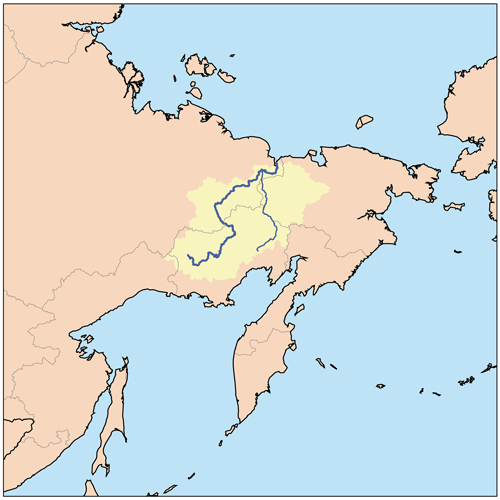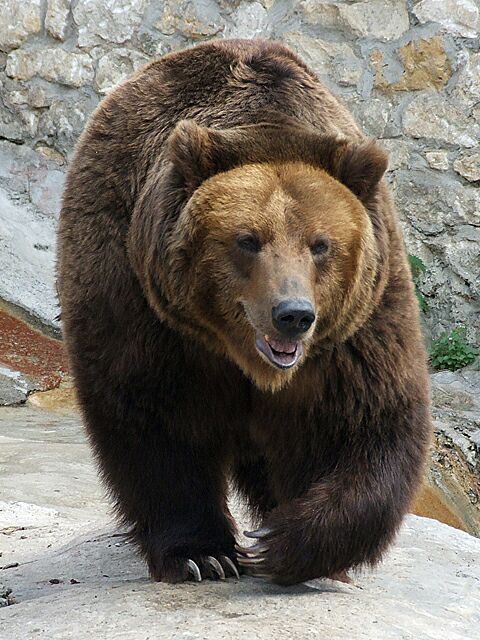|
Kamchatka Shrew
The Kamchatka shrew (''Sorex camtschatica'') is a species of mammal in the family Soricidae. It is endemic to Russia Russia (, , ), or the Russian Federation, is a List of transcontinental countries, transcontinental country spanning Eastern Europe and North Asia, Northern Asia. It is the List of countries and dependencies by area, largest country in the .... Classification The species was first described in 1972. Before that it was considered a subspecies of cinereus shrew (''Sorex cinereus'').Yudin, pp. 137–140 Range Kamchatka shrew inhabits riparian scrubs in North-Eastern Siberia, in the upper reaches of the river Omolon (its tributary Kegan), and in Kamchatka (Kambalny Bay, Lake Azhabachye, neighborhood of Milkovo). Appearance The body length reaches , with an average of . The tail is about 79% of the body length and can be long. The average weight of an adult is .Yudin, p. 129 The back is ashy-gray, sides are lighter, with brown tones. The belly is light ... [...More Info...] [...Related Items...] OR: [Wikipedia] [Google] [Baidu] |
Mammal
Mammals () are a group of vertebrate animals constituting the class Mammalia (), characterized by the presence of mammary glands which in females produce milk for feeding (nursing) their young, a neocortex (a region of the brain), fur or hair, and three middle ear bones. These characteristics distinguish them from reptiles (including birds) from which they diverged in the Carboniferous, over 300 million years ago. Around 6,400 extant species of mammals have been described divided into 29 orders. The largest orders, in terms of number of species, are the rodents, bats, and Eulipotyphla (hedgehogs, moles, shrews, and others). The next three are the Primates (including humans, apes, monkeys, and others), the Artiodactyla ( cetaceans and even-toed ungulates), and the Carnivora (cats, dogs, seals, and others). In terms of cladistics, which reflects evolutionary history, mammals are the only living members of the Synapsida (synapsids); this clade, together with Saur ... [...More Info...] [...Related Items...] OR: [Wikipedia] [Google] [Baidu] |
Endemic
Endemism is the state of a species being found in a single defined geographic location, such as an island, state, nation, country or other defined zone; organisms that are indigenous to a place are not endemic to it if they are also found elsewhere. For example, the Cape sugarbird is found exclusively in southwestern South Africa and is therefore said to be ''endemic'' to that particular part of the world. An endemic species can be also be referred to as an ''endemism'' or in scientific literature as an ''endemite''. For example '' Cytisus aeolicus'' is an endemite of the Italian flora. '' Adzharia renschi'' was once believed to be an endemite of the Caucasus, but it was later discovered to be a non-indigenous species from South America belonging to a different genus. The extreme opposite of an endemic species is one with a cosmopolitan distribution, having a global or widespread range. A rare alternative term for a species that is endemic is "precinctive", which applies to ... [...More Info...] [...Related Items...] OR: [Wikipedia] [Google] [Baidu] |
Russia
Russia (, , ), or the Russian Federation, is a List of transcontinental countries, transcontinental country spanning Eastern Europe and North Asia, Northern Asia. It is the List of countries and dependencies by area, largest country in the world, with its internationally recognised territory covering , and encompassing one-eighth of Earth's inhabitable landmass. Russia extends across Time in Russia, eleven time zones and shares Borders of Russia, land boundaries with fourteen countries, more than List of countries and territories by land borders, any other country but China. It is the List of countries and dependencies by population, world's ninth-most populous country and List of European countries by population, Europe's most populous country, with a population of 146 million people. The country's capital and List of cities and towns in Russia by population, largest city is Moscow, the List of European cities by population within city limits, largest city entirely within E ... [...More Info...] [...Related Items...] OR: [Wikipedia] [Google] [Baidu] |
Cinereus Shrew
The cinereus shrew or masked shrew (''Sorex cinereus'') is a small shrew found in Alaska, Canada, and the northern United States. This is the most widely distributed shrew in North America, where it is also known as the common shrew. Description It is grey-brown in colour with a light grey underside and a pointed snout. It has a long tail that is brown on top and pale underneath with a dark tip. Its body is about in length including a long tail. It weighs about . It has darker colouring than other shrews. Masked shrews can live up to two years, but, on average, only survive eighteen months. In a long-term study done in Alaska, Yom-Tov and colleagues (2005) found that the masked shrew's body size contradicts Bergmann's rule, Bergmann's Rule. The study, done on 650 specimens and spanning from 1950 to 2003, examined body size in relation to ambient temperature. Measurements of body weight and the length of the tail, ear, hind foot, and body were taken. Results yielded that the m ... [...More Info...] [...Related Items...] OR: [Wikipedia] [Google] [Baidu] |
Riparian
A riparian zone or riparian area is the interface between land and a river or stream. Riparian is also the proper nomenclature for one of the terrestrial biomes of the Earth. Plant habitats and communities along the river margins and banks are called riparian vegetation, characterized by hydrophilic plants. Riparian zones are important in ecology, environmental resource management, and civil engineering because of their role in soil conservation, their habitat biodiversity, and the influence they have on fauna and aquatic ecosystems, including grasslands, woodlands, wetlands, or even non-vegetative areas. In some regions, the terms riparian woodland, riparian forest, riparian buffer zone, riparian corridor, and riparian strip are used to characterize a riparian zone. The word ''riparian'' is derived from Latin '' ripa'', meaning " river bank". Characteristics Riparian zones may be natural or engineered for soil stabilization or restoration. These zones are important natural b ... [...More Info...] [...Related Items...] OR: [Wikipedia] [Google] [Baidu] |
Omolon River
The Omolon (russian: Омолон; sah, Омолоон) is the principal tributary of the Kolyma in northeast Siberia. The length of the river is . The area of its basin is . The Omolon freezes up in October and stays under ice until late May through early June. The lower are navigable. Course It begins in the Kolyma Highlands, Magadan Oblast, less than from the Sea of Okhotsk, flows first northeast, with the Kedon Range to the west, then it bends northwest and forms part of the border of Magadan and Chukotka, with the Yukaghir Highlands to the west. At the western end of the Ush-Urekchen it turns north and crosses Chukotka, briefly enters the Sakha Republic and joins the Kolyma upstream from the Arctic. Its basin is surrounded by: (west) branches of the Kolyma, (south) Penzhina and others that flow south, (east) Anadyr and (northeast) Bolshoy Anyuy. Its main tributaries are the Kegali, the west-flowing Oloy (at , the largest tributary), Oloychan, Kedon, Namyndykan, Mo ... [...More Info...] [...Related Items...] OR: [Wikipedia] [Google] [Baidu] |
Kamchatka
The Kamchatka Peninsula (russian: полуостров Камчатка, Poluostrov Kamchatka, ) is a peninsula in the Russian Far East, with an area of about . The Pacific Ocean and the Sea of Okhotsk make up the peninsula's eastern and western coastlines, respectively. Immediately offshore along the Pacific coast of the peninsula runs the Kuril–Kamchatka Trench. The Kamchatka Peninsula, the Commander Islands, and the Karaginsky Island, constitute the Kamchatka Krai of the Russian Federation. The vast majority of the 322,079 inhabitants are ethnic Russians, although about 13,000 are Koryaks (2014). More than half of the population lives in Petropavlovsk-Kamchatsky (179,526 in 2010) and nearby Yelizovo (38,980). The Kamchatka peninsula contains the volcanoes of Kamchatka, a UNESCO World Heritage Site. Geography Politically, the peninsula forms part of Kamchatka Krai. The southern tip is called Cape Lopatka. (Lopatka is Russian for spade.) The circular bay to t ... [...More Info...] [...Related Items...] OR: [Wikipedia] [Google] [Baidu] |
Sorex
The genus ''Sorex'' includes many of the common shrews of Eurasia and North America, and contains at least 142 known species and subspecies. Members of this genus, known as long-tailed shrews, are the only members of the tribe Soricini of the subfamily ''Soricinae'' (red-toothed shrews). They have 32 teeth. These animals have long, pointed snouts, small ears, which are often not visible, and scent glands located on the sides of their bodies. As their eyesight is generally poor, they rely on hearing and smell to locate their prey, mainly insects. Some species also use echolocation. Distinguishing between species without examining the dental pattern is often difficult. In some species, a female shrew and her dependent young form "caravans", in which each shrew grasps the rear of the shrew in front, when changing location. Species * Genus ''Sorex'' – most basal of the genera ** Kashmir pygmy shrew (''S. planiceps'') – India and Pakistan ** Tibetan shrew (''S. thibetanus'') � ... [...More Info...] [...Related Items...] OR: [Wikipedia] [Google] [Baidu] |
Mammals Of Russia
This is a list of the mammal species recorded in Russia. There are 266 mammal species in Russia, of which five are critically endangered, thirteen are endangered, twenty-six are vulnerable, and six are near threatened. One of the species listed for Russia is extinct and one can no longer be found in the wild. All the mammals of Russia are in the subclass Theria and infraclass Eutheria, being all placental. The following tags are used to highlight each species' conservation status as assessed by the International Union for Conservation of Nature: Order: Sirenia (manatees and dugongs) Sirenia is an order of fully aquatic, herbivorous mammals that inhabit rivers, estuaries, coastal marine waters, swamps, and marine wetlands. All four species are endangered. *Family: Dugongidae **Genus: ''Hydrodamalis'' *** Steller's sea cow, ''H. gigas'' Order: Rodentia (rodents) Rodents make up the largest order of mammals, with over 40% of mammalian species. They have two incisors in ... [...More Info...] [...Related Items...] OR: [Wikipedia] [Google] [Baidu] |
Endemic Fauna Of Russia
Endemism is the state of a species being found in a single defined geographic location, such as an island, state, nation, country or other defined zone; organisms that are indigenous to a place are not endemic to it if they are also found elsewhere. For example, the Cape sugarbird is found exclusively in southwestern South Africa and is therefore said to be ''endemic'' to that particular part of the world. An endemic species can be also be referred to as an ''endemism'' or in scientific literature as an ''endemite''. For example '' Cytisus aeolicus'' is an endemite of the Italian flora. '' Adzharia renschi'' was once believed to be an endemite of the Caucasus, but it was later discovered to be a non-indigenous species from South America belonging to a different genus. The extreme opposite of an endemic species is one with a cosmopolitan distribution, having a global or widespread range. A rare alternative term for a species that is endemic is "precinctive", which applies to s ... [...More Info...] [...Related Items...] OR: [Wikipedia] [Google] [Baidu] |
.jpg)




